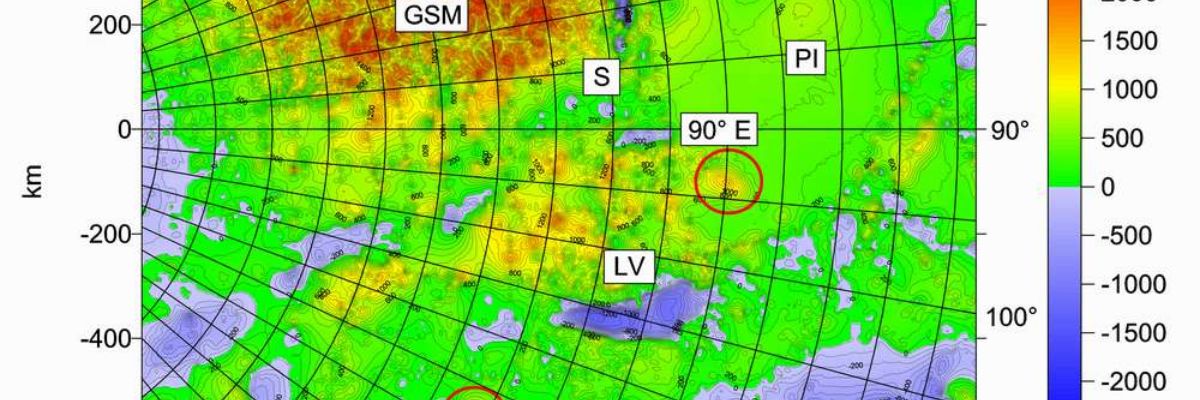
Three new lakes under the ice in Antarctica
22. 05. 2018
Czech scientists have discovered three new lakes in eastern Antarctica. Each is 20 to 40 kilometres in diameter. They lie at a depth greater than one kilometre under the ice and there are opinions that all three lakes are interconnected by a river flowing into Lake Vostok, the largest underground lake in the world.
“For the discovery of the lakes, we needed two sets of data. Gravitational data from satellites and topographic data from radars, which are the only thing that can penetrate the ice of Antarctica,” said Jaroslav Klokočník from the Astronomical Institute of the CAS, who collaborated on the discovery with Jan Kostelecký from the Research Institute of Geodesy, Topography and Cartography, v.v.i., and Václav Cílek from the Institute of Geology of the CAS.
The precision and resolution capability of these data have increased about one-hundred times over the past twenty years. The possible discoveries were therefore unimaginable before. The lakes specifically are between the Gamburtsev subglacial mountain range and the gigantic lake Vostok in eastern Antarctica. “We also verified the subglacial connection of the area of the lakes between the Gamburtsev subglacial mountain range and Lake Vostok via the so-called Middle River and we also discovered a candidate for a gigantic lake basin comparable with Lake Vostok itself,” said also Jaroslav Klokočník. The lakes even already have Czech female names proposed, namely Magda, Denisa and Lucie after the wives of the discoverers.

The black arrow shows the possible path of the river connecting the discovered lakes under the ice and Lake Vostok, which is in the lower part of the image.
The team of Czech scientists have published a scientific article on their discovery in the journal Polar Science.
Besides lakes, the researchers from the Astronomical Institute of the CAS investigate in Antarctica also volcanos, which leave a characteristic trace when measuring the gravitational pole of the Earth.
Prepared by Vlaďka Coufalová, Department of Media Communication of the Head Office of the CAS from the background materials of the Astronomical Institute of the CAS
Photo: Astronomical Institute of the CAS (in the initial photo Glacier topography in the studied area of eastern Antarctica)
Read also
- The missing information on photosynthesis is revealed by lasers
- Scientists have managed to show the movement and structure of ionic hydrates
- Putovní výstava „Umění vědy“ v Jihlavě
- Letní škola astronomie v Brně
- Poprvé na světě: Protony urychlené v plazmatu vytvářeném z vodíkového ledu laserem PALS
- Praha zažije největší setkání sociologů a socioložek v evropské historii
- Finále Expedice vesmír 2015
- Nejpřesnější test základního zákona mikrosvěta – symetrie CPT
- V obecném zájmu
- Vědecká spolupráce s Korejskou republikou
The Czech Academy of Sciences (the CAS)
The mission of the CAS
The primary mission of the CAS is to conduct research in a broad spectrum of natural, technical and social sciences as well as humanities. This research aims to advance progress of scientific knowledge at the international level, considering, however, the specific needs of the Czech society and the national culture.
President of the CAS
Prof. Eva Zažímalová has started her second term of office in May 2021. She is a respected scientist, and a Professor of Plant Anatomy and Physiology.
She is also a part of GCSA of the EU.